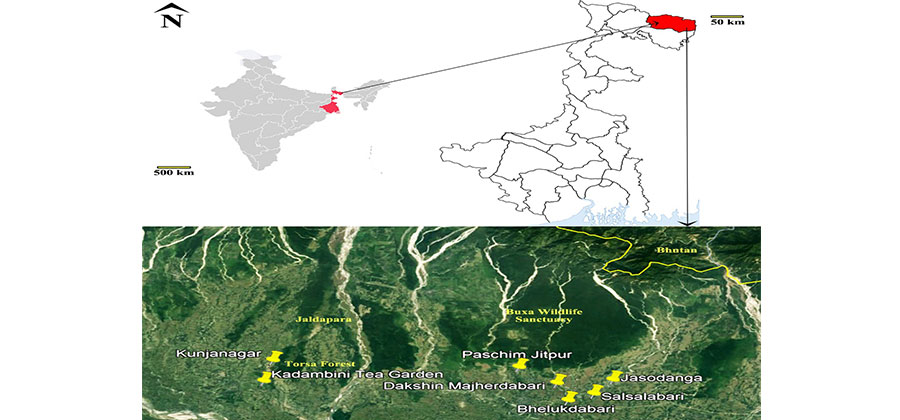


Indian Journal of Science and Technology
Year: 2020, Volume: 13, Issue: 20, Pages: 2021-2029
Original Article
Aninda Mandal1∗, Tamalika Adhikary1 , Debarun Chakraborty2 , Priti Roy1 , Joy Saha2 , Anushree Barman1 , Poulami Saha1
1 Department of Botany, A. B. N. Seal College, Cooch Behar, West Bengal, India. Tel.: +91 9434602182
2 Department of Botany, Cooch Behar Panchanan Barma University, Cooch Behar, West Bengal, India
∗Corresponding author:
Aninda Mandal
Department of Botany, A. B. N. Seal College, Cooch Behar, West Bengal, India.
Tel: +91 9434602182
Email: [email protected]
Received Date:09 May 2020, Accepted Date:22 May 2020, Published Date:18 June 2020
Objectives: To document the traditional knowledge on medicinal plants used by the Santal tribe residing at seven different villages in Alipurduar district of West Bengal, India to treat common human ailments. Methods: The field survey was conducted during July 2018 to January 2020 using guided fieldwalk method. Santal traditional medicinal practitioners (locally called Kabiraj) and local knowledgeable Santal men and women were interviewed with the help of pretested semi-structured questionnaries to record their knowledge on ethnomedicinal uses of local vegetation in their surroundings. The questionnaire covered aspects like local name, scientific name, family, used parts, ethnomedicinal uses, among others. Plants were collected mostly during the flowering stage and routine method of herbarium techniques was followed and the collected plants were identified using relevant sources. Findings: Altogether 73 medicinal plants of 45 families were recorded to be used to treat 38 types of diseases ranging from very common physical problems to complex diseases. Fabaceae represents the highest number (5 species) of medicinal plants. Herbs (39.73%) and trees (38.36%) represents the dominant life-forms and mostly the plants were collected from the natural habitat (56.16%). For the preparation of medicine, leaves were found to be most frequently used (47.50%) plant part than the others. In general, ethnomedicines were prepared from the fresh plant materials and were administered orally (66.25%) or topically (33.75%). Applications: Documentation of medicinal plants used by the Santals in the treatment of various diseases could further be utilised to develop new drugs and pharmaceutical products. However, to achieve sustainable development, conservation, cultivation and proper utilisation of medicinal plants should be monitored scientifically. Novelty: Utilization of medicinal plants by the Santal tribe has been documented for the first time from Alipurduar district and has enriched the existing database of medicinal plants.
Keywords: Ethnomedicine; medicinal plants; Santal; traditional knowledge; Alipurduar; West Bengal
© 2020 Mandal, Adhikary, Chakraborty, Roy, Saha, Barman, Saha. This is an open access article distributed under the terms of the Creative Commons Attribution License, which permits unrestricted use, distribution, and reproduction in any medium, provided the original author and source are credited.
Published By Indian Society for Education and Environment (iSee)
Subscribe now for latest articles and news.